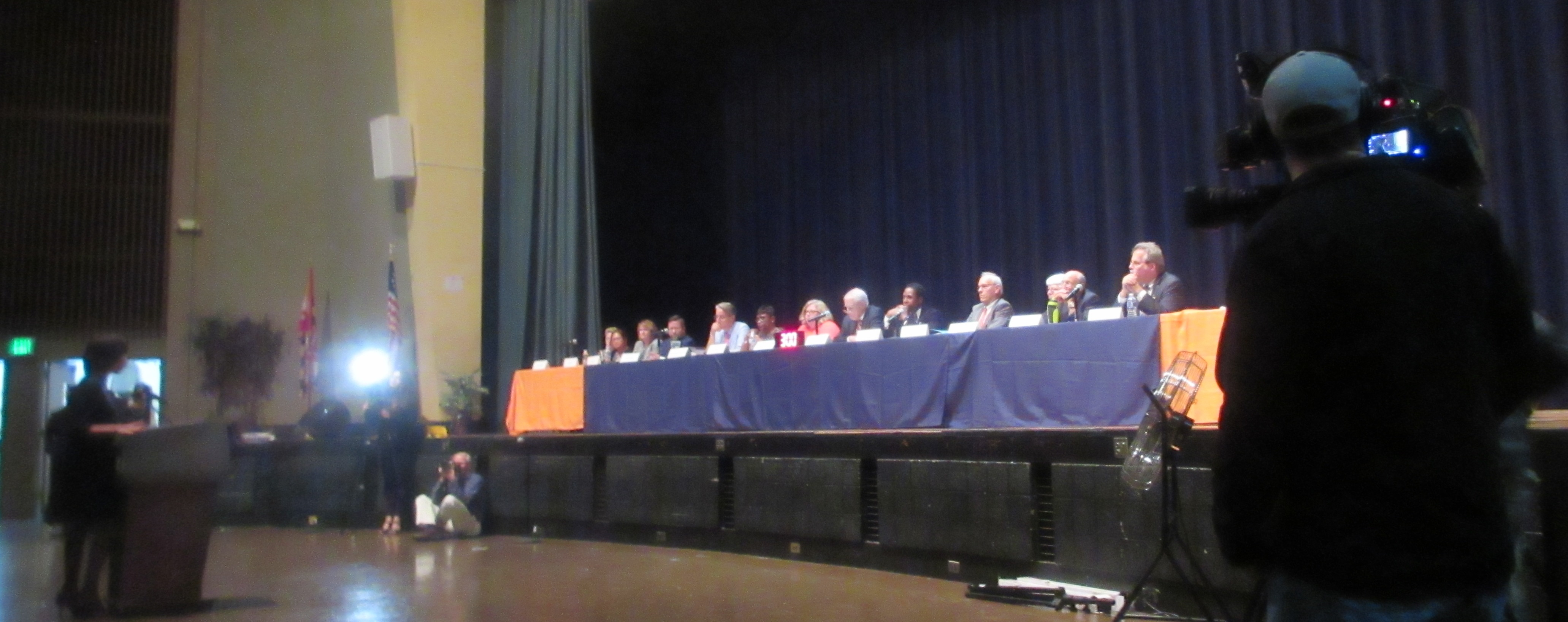By Glynis Kazanjian
For MarylandReporter.com
Maryland has one of the highest household incomes in the U.S., but only 40% of its students met proficiency standards in reading and math on the PARCC assessments in 2017, a Johns Hopkins University researcher told the Kirwin Commission last week.
A $1.46 billion plan using one-on-one and small group and tutoring would help close the gap between top performing students and those who struggle to keep up, Robert Slavin, Johns Hopkins University Director of Research and Reform in Education said.
“Nobody wants more taxes,” Slavin said. “But it’s not to the moon. It’s not something Maryland can’t do. The proposal outlines a statewide approach intended to enable virtually all students in Maryland to reach the proficient level on PARCC.”
The proficiency standard on the standardized test Partnership for Assessment of Readiness for College and Careers (PARCC), which is used in third-through-eighth grades, is defined as a score of 750, Slavin stated. But Maryland’s average score is 740, 10 points below the average.
“If you could get the average student in Maryland scoring 740 to a score of 750, Maryland would no longer be number 30 in terms of scores in the country, it would be number one,” Slavin said.
As part of his presentation, and for purposes of explanation, Slavin said 10 points in a PARCC score is equivalent to one band.
Tutoring cornerstone of plan
“But what you said was you wanted to get virtually all students in Maryland to the proficient standard,” Slavin said. “Getting kids at 740 to 750 could be done. That would be hard to do, but not impossible. Now let’s think about kids at 730. Twenty points – two bands – is a big lift. Frankly, there’s only thing we know about that can reliably increase student performance by two bands and that is tutoring. The only thing we know is tutoring, nothing but tutoring.”
Slavin broke his plan into a three-tier system.
Tier I uses proven classroom programs that reduce the need for tutoring and could be implemented tomorrow statewide, across all grades and subjects, at a relatively inexpensive cost. Slavin said there are approximately 101 of these types of programs, and some of them are already used in some Maryland public schools.
“These are programs you can hang your hat on,” the results, Slavin said. “They should be the first line of action.”
Tier II should primarily be one-to-small group instruction and if the budget was available, they could be implemented by January.
In the Tier II category, Slavin said groups of one-to-six children for 40 to 45 minutes per day, could result in student scores increasing their PARCC test scores by one-to-two bands, or 10 to 20 points.
Tier III would require one-to-one tutoring, which is “more effective than small group, but also more expensive,” Slavin said.
With this method, if a teacher worked with an individual student 30 minutes per day, every day, a student’s test score could increase by as much as five bands, or 50 points.
At an individual elementary school of 450 students with a 40% proficiency achievement level, 12 tutors would be required, Slavin said. He factored in an annual salary of $84,000 per teacher, which includes salary and benefits. He also factored in $200 per child for Tier I schools where tutors are not needed.
Budget shifts, cost savings could reduce cost of plan
The cost of the plan will be greatly reduced through using existing funding and cost savings — only 4.5% more than current expenditures, Slavin said. When the plan is in full operation, he said an existing $519 million for tutoring could be redirected and savings from reduced need for special education would free up another $379 million — so the true net cost would be about $555 million. The program could also be phased in to spread the cost out over time.
“The tutoring models I’m talking about are not experimental,” Slavin said. “They do not need another study. They do not need another pilot. They’re proven beyond a shadow of a doubt as far as educational research is concerned. What’s utterly unprecedented about this is building it around an entire state system or district system.”
Following Slavin’s presentation, Kirwan Commission Chair Brit Kirwan asked how many years a student would need to participate in one of the tiers.
“Maybe two-thirds of the kids would need one year of service,” Slavin said. “When kids need that year might be different. I will assume that the largest number of kids that receive tutoring would receive it around first grade.”
But Slavin said based on today’s test scores, there are vast numbers of kids in middle school that are way below the standard. If the program is implemented, in the beginning a lot of tutoring may be required in middle school until it is no longer necessary due to rising elementary students who have started at earlier ages.
Dramatic score improvements
Commissioner Craig Rice, a Montgomery County Councilmember, was concerned about demographic information that he said seemed to be missing from Slavin’s report, which left Rice feeling concerned.
“There are groups, districts and schools in Maryland where the problems are much greater,” Slavin said. “Naturally a lot of these resources would be devoted to those groups because the money would follow the performance of the students. The programs I’m talking about have primarily been used with students who are in poverty, are English language learners and in various kinds of difficulty. The things that unite them are students that need to be performing in school a whole lot better and quickly.”
Nancy Madden, a Johns Hopkins University education professor, said one of the studies referenced in the presentation was conducted in Baltimore City and targeted to the most needy students. They saw a 20-point improvement over a six month tutoring period in grades one to three, she said.
Madden also cited a school in Virginia that was studied over seven years that was performing 30 points below the state average on Virginia’s Standards of Learning assessment.
“This is a school that is 85% of free and reduced lunch,” Madden said. “Students speak a variety of other languages, mostly they are predominantly immigrants, primarily African immigrants. Right now they are performing four points above the state average, in spite of their poverty and the demographics. That’s what can be done with the application.”

More than 800 people attended the Oct. 12 hearing of the Kirwan Commission in the auditorium of the Baltimore Polytechnic Institute. MarylandReporter.com photo




This proposal is extremely problematic! First, why are we setting our goal creating “state of the art education in Maryland” only on an arbitrary standardized test score that many people in the education field know is bogus? The PARCC test (and SBAC) were DESIGNED to flunk 60% of the population. This proposal to simply provide tutoring to bring up these test scores is only addressing a symptom, not the root cause of the opportunity gap. Second, did I read that right that they are proposing to take money FROM SPECIAL ED to fund this? It mentions redirecting and reallocating money from the supposed SpEd savings that will be created. This is a giant leap of faith based on what? While I agree that small group instruction, 1:1 attention and tutoring can be very helpful, I also know most schools already have these three things in place! Really. Planning to take money away from Special Education is problematic because it will further exacerbate the opportunity / achievement gap. Simply providing tutoring as the catch-all plan will not prevent students with serious mental, physical and emotional needs from having those needs. I taught in public schools for over 10 years and I have seen so many different reasons that are really at the core of why some students perform poorly in schools. Reasons like homelessness, abuse, hunger, undiagnosed illness, caretaking for younger relatives, drug dependency, etc often came up with my students. I could go on an on but won’t. I am not against tutoring. I am against framing the plan to improve educational attainment and educational equity statewide that does not take into consideration a social justice lens.
This won’t help if the students aren’t capable to learn and the teachers are incapable of teaching…
All of the gimmickry, PC tablets, etc. don’t matter if the students don’t know how to read, do math, do basic research on topics, etc. all of the things that I learned while I was in grade and high school from 1959-1971, which provided the foundation for college…
As I often say : An uneducated person with a PC, tablet, smartphone is still uneducated…
Why not look at what worked in the past and do it and save money and avoid the waste of having another level of bureaucrats and administrators ?
BTW, four Maryland counties, along with the City of Baltimore, have the most money spent on education… But, not on the students, teachers, and classrooms… But, on administration !
And the City of Baltimore is #1 and look at the product !
This is what you get with a fake education (common core) that is held accountable by a very bad test. PARCC and common core go hand in hand and 1 is as evil as the next. Common core is nothing but drilling a skill set to be tested. No education involved. The state needs to stop putting lipstick on the pig…..common core doesn’t make the kids any smarter and the test does nothing but show it. Time to let teachers start writing curriculum and doing the job they were trained to do. No tutoring (to the tune of millions ) needed.
Sounds like a $1.46 billion experiment. A sample size of two is emphatically not representative of the whole. Improvements to PARCC scores are a benchmark of…. what?? Is there a consensus that PARCC is the one and only benchmark to measure? I don’t think so.